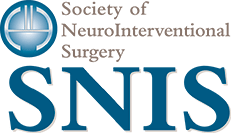Mark Bain: For stroke care, trauma offers perfect model
From The Columbus Dispatch:
Imagine coming home one day to find your significant other collapsed on the floor. Unable to move one side of her body or speak, she seems to be experiencing a severe stroke. Would you want her to go to a hospital that may have some degree of stroke expertise, or would you rather she be taken to a comprehensive, or Level 1, stroke center that is equipped to handle the most life-threatening strokes 24/7/365?
As daunting as this sounds, our nation’s medical first responders are forced to make this judgment call every day. Currently, emergency medical technicians in many states, including Ohio, don’t have a protocol for routing stroke patients to care centers, which means they often take these patients to the nearest medical facility. This could be a life-or-death decision for the patient because millions of brain cells die each minute blood flow is denied to the brain.
Arizona, Tennessee, Colorado, Massachusetts and Virginia are changing the way they think about triage and transport so that severe stroke patients get to the right place at the first time. Our state has an opportunity to join these leaders on the cutting edge of stroke care, giving the people of Ohio the best chance for not only survival but also a full recovery.
Stroke advocates and experts are working right now with legislators in Columbus to change hospital designations and EMS protocols to facilitate transport of these patients directly to a Level 1 or comprehensive stroke center. House Bill 464 calls for the recognition of stroke centers based on their ability to treat severe stroke and the establishment of protocols for treating stroke patients. But this only gives us half of the solution. First responders need clear guidelines for transporting severe stroke patients in order to ensure that every patient has access to the life-saving treatment they need right away.
Decades ago, when states and localities adopted a Level 1 trauma center model, it was with the understanding that teams that are trained to treat traumas and see hundreds of cases a year are most likely to produce life-saving results for patients. Today, EMTs take severe trauma patients directly to those facilities.
The standards should be no different for the nearly 800,000 people per year who experience a stroke in the U.S.
Patients deserve a fully integrated care team — one that includes providers who are highly experienced in stroke care and who do this work often. Level 1 stroke centers are staffed for every stroke eventuality, which is important because treating stroke requires complex decision-making. The ability to efficiently deliver the multifaceted care that severe stroke patients need is only guaranteed at Level 1 centers and requires a modern approach to updating EMS protocols.
Severe stroke patients who receive the proper care leave the hospital days sooner and are twice as likely to be independent within 90 days. This diminishes the need for extensive rehabilitation, which reduces long-term care costs.
While we work to improve the transport protocols for patients, tools are emerging that will make it easier for EMTs to make better decisions in the field. The Society of NeuroInterventional Surgery recently developed a mobile app designed for first responders that takes the guesswork out of triage.
The app provides first responders with stroke scales so they can evaluate a patient’s symptoms and make an informed decision about the severity of a stroke and, as a result, the care center best equipped to treat that patient.
Ultimately, it all comes down to time. Every minute of delay before a patient receives stroke care means an extra week of recovery. And given that we know the trauma model works, we have to ask ourselves: Do stroke patients deserve less?
Mark Bain, M.D., is a neurosurgeon at the Cleveland Clinic in Cleveland, and a board member of the Society of NeuroInterventional Surgery, based in Fairfax, Virginia.

